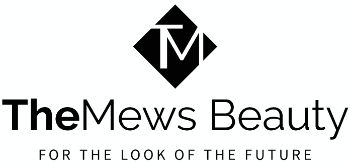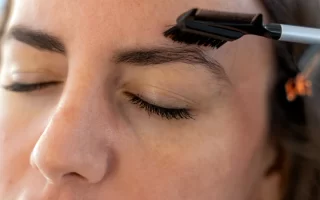Rhinoplasty reshapes or reconstructs the nose. It has gained immense popularity over the years due to its transformative effects on physical appearance and self-confidence.
Continue reading to explore the power of rhinoplasty in transforming lives while providing accurate information about the procedure.
Table of Contents
Understanding Rhinoplasty
Rhinoplasty is performed for various reasons, including cosmetic enhancement and functional improvement. Cosmetic rhinoplasty focuses on improving the nose’s aesthetics, while functional rhinoplasty addresses issues related to breathing difficulties caused by structural abnormalities.
An experienced plastic surgeon makes incisions inside or outside the nose during rhinoplasty surgery. They then reshape or resize the bone and cartilage to achieve desired results. Advanced techniques such as cartilage grafting may be utilized when necessary.
Why Is Rhinoplasty Important?
Rhinoplasty transforms lives in the following ways:
Physical Transformation
One of the impacts of rhinoplasty is its ability to create significant physical transformations. Many individuals seek this procedure because they’re dissatisfied with their nasal shape or size, which can affect their overall facial balance and harmony.
A skilled surgeon can bring out one’s best features and enhance facial symmetry by carefully altering nasal contours. Whether it involves reducing a prominent hump, refining nostril width, correcting asymmetry, or adjusting tip projection — each modification contributes towards achieving more aesthetically pleasing results tailored to individual preferences.
Emotional Well-being
The psychological impact of unsatisfactory nasal appearance should be considered too. For many people who feel self-conscious about their noses’ shape or size, low self-esteem can constantly affect social interactions and personal happiness.
Undergoing successful rhinoplasty surgery leads to newfound confidence and improved patient emotional well-being. Feeling more comfortable and satisfied with appearance can positively impact various aspects of life, including personal relationships, professional opportunities, and overall quality of life.
Correcting Functional Issues
Rhinoplasty isn’t solely about cosmetic enhancements; it addresses functional issues that may hinder proper nasal breathing. A deviated septum or nasal valve collapse can cause chronic congestion, snoring, or sleep apnea. These problems affect the daily lives of individuals by impairing sleep quality and overall respiratory function.
Functional rhinoplasty aims to correct these issues by restoring normal airflow through the nose. You can enjoy increased energy levels during the day and better sleep patterns.

Benefits of Choosing an Experienced Surgeon
There are several key benefits associated with choosing an experienced professional:
Expertise and Skill
Experienced rhinoplasty surgeons have honed their skills through years of specialized training and performing numerous procedures. Their expertise allows them to assess each patient’s unique nasal structure, understand their aesthetic goals, and develop personalized surgical plans accordingly.
Comprehensive Evaluation
Seasoned rhinoplasty surgeons conduct thorough evaluations during initial consultations. This comprehensive approach ensures that cosmetic and functional issues are addressed simultaneously, providing patients with enhanced overall satisfaction.
Rhinoplasty has evolved into a transformative surgical procedure that goes beyond mere physical changes. It can enhance self-confidence while addressing functional issues related to breathing difficulties caused by structural abnormalities. With advancements in medical technology and skilled surgeons’ expertise, more people are experiencing positive appearance transformations through this remarkable procedure.
Frequently Asked Questions
Is Preoperative Analysis Important in Rhinoplasty?
50% of the outcome of a nose job relies on preoperative analysis. Patients present photographs of what they expect; only experts can help achieve the desired results. It is, therefore, essential to research your potential surgeon, along with the cost of rhinoplasty surgery, before settling on a surgeon.
What Does the Rhinoplasty Procedure Involve?
The process usually ends on the same day. There may be bleeding at the back of the throat, causing problems for a semi-conscious patient. For this reason, most surgeons use general anesthesia. If the patient prefers a particular type of anesthesia, he or she is free to choose.
Are There Any Post-procedure Touch-ups Necessary?
You may need a post-surgery touch-up if your nose swells during the procedure. The need for touch-ups arises in 15% of surgical operations.
What Happens After a Nose Job?
It’s essential to numb the pain when the patient leaves. Surgeons use numbing agents that have a long-lasting impact, and a splint is placed on the nose for a week. The nose remains swollen for days and shouldn’t be blown. Sometimes the procedure leads to bruising. The minor traces of swelling may take up to a year or longer to disappear, but the nose’s appearance is already enhanced when the splint is removed.
Can Rhinoplasty Results be Fixed?
Rhinoplasty revision depends on the procedure and the patient’s anatomy. Some cases may require minor touch-ups, while others require major nasal structure revisions. A revision is more complex and takes more time than a first-time rhinoplasty, and there are lower expectations of what can be achieved.

Does Rhinoplasty Supplement Other Surgeries?
Other procedures may be performed simultaneously with rhinoplasty, such as chin advancement, to improve the harmony of the face. Deciding on each set of surgeries is done on a case-by-case basis, and each option is discussed during consultation.




